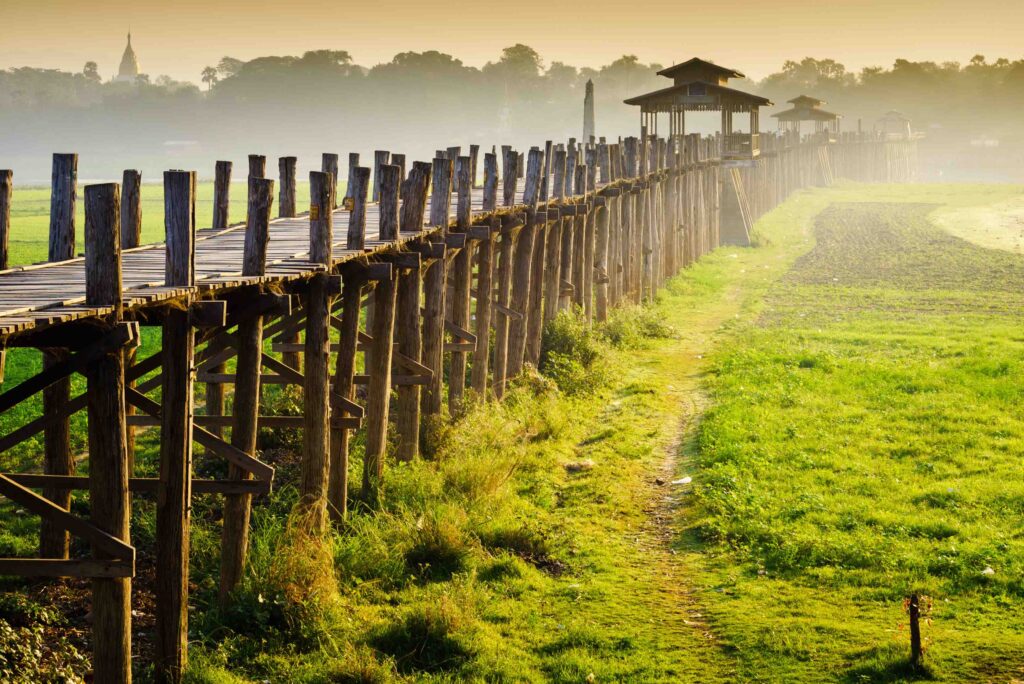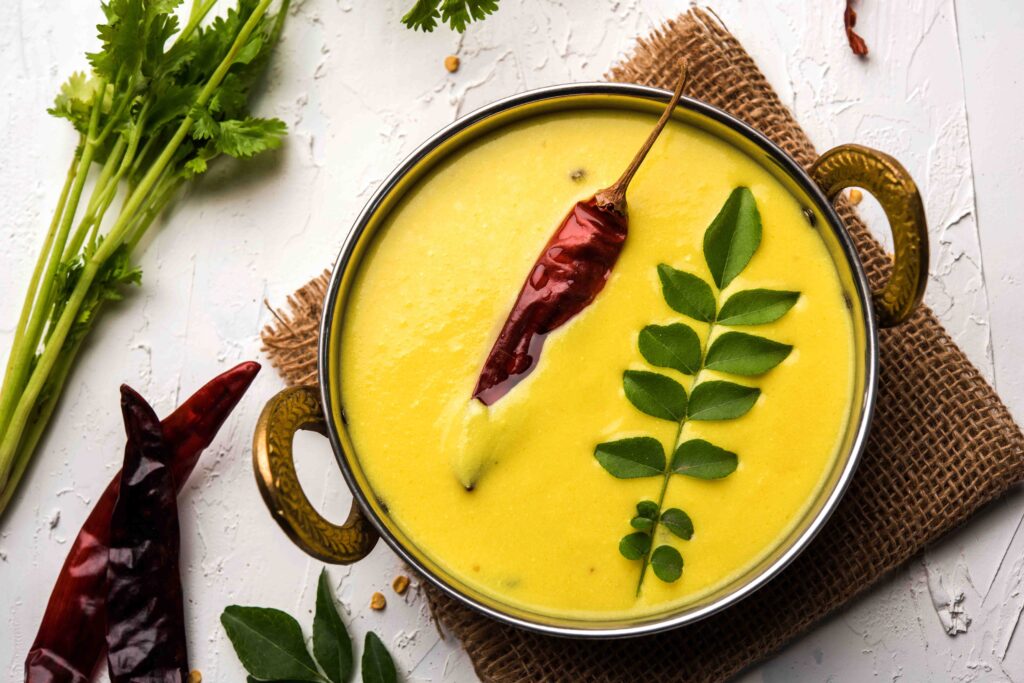Food and culture are inseparable – and this family’s history is forever linked with an iconic dish by Ashok Jatia
The reason why the Jatia family migrated to Rangoon, Burma (now Myanmar) from a tiny village called Bissau, Rajasthan is applicable to almost all the very successful Marwari business houses of today whose elders also hailed from a radius of around 300km. In the 1930s the whole of Rajasthan (then known as Jaipur State) was extremely under-developed and the harsh North-Western desert region where Bissau is located offered no opportunity whatsoever for families to prosper; rather, it was the opposite. Even to survive in such an environment posed extreme challenges.
Under these circumstances my grandfather Ramgopal ji Jatia, along with a few of his brothers and a few unmarried sisters shifted to Rangoon to join their father who had gone there a bit earlier to scout for business opportunities.
It was in Rangoon that my father Ganesh Jatia and all his siblings were born. The entrepreneurial spirit, hard work and street-smart qualities coupled with multiple working hands became a sure shot formula for the larger Jatia family to grow rapidly and prosper in various trades such as commodities like rice and rubber, textiles and more so the development of international trade by establishing offices in Japan Burma, India and Singapore in the early years.
War and upheaval
However the first tragedy struck in 1942 during the 2nd World War when Japan wrested control of Burma from the British. At that time it was not safe for Indians to stay there any more and hence my grandfather decided to seek a safer haven in India.
My father was hardly 12 years at that time but he clearly recalls to this day the treacherous trek which our family undertook through the toughest jungles of Burma, entering into India via the dense jungles of Assam.
At a river crossing the ferry was overloaded with refugees who were all seeking safe passage. The whole night was spent by the family on the deck of the very small and cramped ferry, all huddled together and very wet. Only in the morning did the family realise that one of my father’s sisters was missing. Shock and tragedy soon set in as they realised that she had fallen overboard in her sleep during the night…
Tough times
Life in Mumbai (then Bombay) was not easy for my father, his three brothers and one sister. As luck would have it my grandfather Ramgopalji had already separated from his brothers in Burma itself, so he was virtually fending for himself and his family all alone. Home was in the form of a commune-style accommodation shared by almost 100 other families in Bhuleshwar.
He found employment with a textile trading firm on a monthly salary of Rs 150, speculating in cotton futures on behalf of the firm.
In 1945 the Japanese left Burma and once again it was under the control of the British. In the same year Ramgopalji’s mother passed away in a small town in UP where Ramgopalji’s parents had shifted to after returning from Burma during World War II. Ramgopalji took his entire family there for the mourning.
After the 12 days’ mourning period was over he waited at the Delhi Railway Station platform for two nights for the connecting train which would take them back – to the hard life in Bombay where he could barely support his family on his meagre salary. On an impulse he tore up the tickets to Bombay and instead booked new tickets for Calcutta, from where they would travel back to Rangoon since the Japanese occupation was over!

Return to Burma
That one decision altered the history of our family for ever, I guess. He got in touch with his old friends and contacts, and preferred to work for himself rather than be an employee. He set up a partnership with some old contacts and soon established a healthy trading firm dealing in textiles etc.
Alas, when my father was merely 18 years old, Ramgopalji fell victim to the dreaded disease of cancer and passed away at the age of 40, leaving behind a widow and five children!
Although Ramgopalji had separated from his four brothers early on, it was only because of the magnanimous act of his brother Subhkaran ji who declared to the rest of the family that the children of Ramgopalji would be henceforth entitled to one-fifth share of the family business.

In this backdrop my elder brother Suresh, younger sister Kiran and I were born in Rangoon. The joint family business of the Jatias was thriving since due to multiple working hands we were able to expand the emerging opportunities by leaps and bounds.
Then suddenly in 1963 fate again played a cruel blow and all of us had to leave once again from Burma, only this time it would be forever!
In a military coup, General Ne Win and his band of 16 generals took over the reins of power and shut out Burma from the rest of the world. He nationalised all the businesses and gave foreigners like us Marwaris and the South Indian Chettiar community, which basically controlled all the trade, just 24 hours to leave the country without any compensation. The only choice they gave us was to become “Managers” of our shops and establishments on behalf of the state! With one stroke by way of an ordinance they took away all our properties and wealth.
So for the second time our family was forced to flee from Burma. Luckily for us we had already established branches in Japan, Singapore etc so it was easier for us to restart after moving back to Bombay, but without much capital.
But being very hardworking, disciplined and determined, the Jatia family was able to make its mark even on Indian shores even though we had a very late start in 1963. And as the family grew and prospered everyone slowly branched out on their own, but the bond of togetherness is still very strong due to the saga which the family had to face as a whole.
The origin of Khowsuey
It is said by many that the Jatia Family is responsible for bringing back the now very popular Burmese dish, Khowsuey, to India. I can neither endorse that nor deny it, but when our ladies started making it and serving it at social functions and gatherings it became an instant hit!
The origin is of course due to the very deep ties our family had with Burma, with the elders having spent most of their lives there.
By then we had adopted a lot of the Burmese customs such as the wearing of lungi and celebrating the Thingyan Water Festival (similar to our Holi) with great enthusiasm, etc. It was also but natural that a lot of the Burmese food was introduced into our homes. Since we were strict Marwari vegetarians we had to improvise meatless options from their dishes and I think that is how my mother and aunts perfected the most authentic and tasty vegetarian option of the Khowsuey. There were other dishes as well, but the only other one which we still make today is called Khadi-samosa which is basically a concoction of potato samosas shredded with onion pancakes and served in a hot coconut based kadhi and garnished with many condiments.

Here is the detailed recipe and perhaps the most authentic one I dare say of the original Burmese Khowsuey (vegetarian).
Ingredients for kadhi
- 3 / 4 kg curd, sieved
- 100 gm besan (gram flour)
- 1 / 4 kg potatoes, boiled and pureed
- 1 inch piece ginger
- 10 green chillies
- 2 tsp saunf (fennel)
- 1 / 3 bunch fresh pudina (fresh mint leaves)
- 1/3 bunch fresh coriander leaves
- Milk of 1 coconut with 1.5 glasses of water
- 1 inch piece dalchini (cinnamon)
- 4-5 glasses of water
- Salt to taste
Method: Grind all the masalas with a little water and sieve it well. Then mix with the sieved curd, besan mixed with a little water and sieved, coconut milk and pureed potatoes. Mix well, sieve the whole mixture and add the water to the required consistency. Then temper with oil with the following seasonings. Add the kadhi mixture and wait for the kadhi to boil. After it starts boiling mix well and keep stirring occasionally. Boil for some more time. The kadhi should simmer on low heat for about 30 minutes.
Ingredients for tempering of kadhi
- 2 to 3 tsp rai (mustard seeds)
- 1 / 2 tsp methi seeds (fenugreek seeds)
- 1 / 4 tsp hing (asafoetida)
- 5 to 6 laung (cloves)
- 2 sticks dalchini (cinnamon)
- 1 tsp jeera (cumin)
- 20 to 25 curry leaves
- 4 tsp oil
- 5 to 6 red round chillies
Ingredients for vegetable
- 300 gm cauliflower
- 100 gm carrots
- 200 gm lauki (bottle gourd)
- 300 gm French beans
- 300 gm onions
- 300 gm potatoes
- 200 gm peas optional
- 1 / 2 kg tomatoes, boiled, pureed and sieved
- Salt to taste
Method: Chop all the vegetables into small cubes and temper with the ingredients given below. Cover and cook till the vegetables are done then add tomato puree. Then add garam masala, coriander powder and tomato sauce and cook for some more time.
Ingredients for tempering of vegetables
- 1 inch piece ginger chopped
- 2 green chillies chopped
- Tej patta
- 2 to 3 sticks of dalchini (cinnamon)
- 2 to 3 laung (cloves)
- 4 to 5 tsp oil
- 4 to 5 tsp tomato sauce
- 4 tsp dry ground coriander powder
1 tsp garam masala
Other ingredients
- 1 / 2 kg spaghetti boiled
- 200 gm spaghetti fried
- 1 kg onion sliced thin and fried
- 3 onions, sliced thin, raw
- ½ cup garlic chopped finely and fried
- 2 cups dry coriander seeds, coarsely ground
- 1 cups red chillies dry, coarsely ground
- 1 cup fresh coriander, chopped
- Lemon wedges if required
The coriander seeds and red chillies should be coarsely ground separately in the mixie and then lightly roasted on the tava separately. Add a little salt to each. Leftover coriander, chillies, fried onions, fried spaghetti, fried garlic can be stored in the deep freeze for using next time. The fried spaghetti, fried garlic and fried onions can be prepared earlier and stored in the deep freeze.
Assembly of Khowsuey
In a flat serving dish make 2 to 3 layers by first layering boiled spaghetti, then the mixed vegetables. Then garnish with a little fried onions and fried spaghetti. Make another layer in the same way. On top garnish with chopped fresh coriander.
Keep fried onions, fried spaghetti, fried garlic, raw onions, coriander powder, chilli powder, fresh coriander, lemon wedges in small bowls on the table and individually garnish each dish according to taste.
While preparing individual portions, add the spaghetti and vegetables from the serving bowl. Add your garnishings and pour hot kadhi on top. This is a complete and healthy one-pot meal. Enjoy!!









Ours is a similar family history to a point but because my mom’s family had been there for 3 generations, they were well versed in the politics. as a matter of fact when the entire cabinet was bombed during session, my father had just left the building with my brother!
We too have a family recipe for Khou Shwey and Pyajo!
Comments are closed.